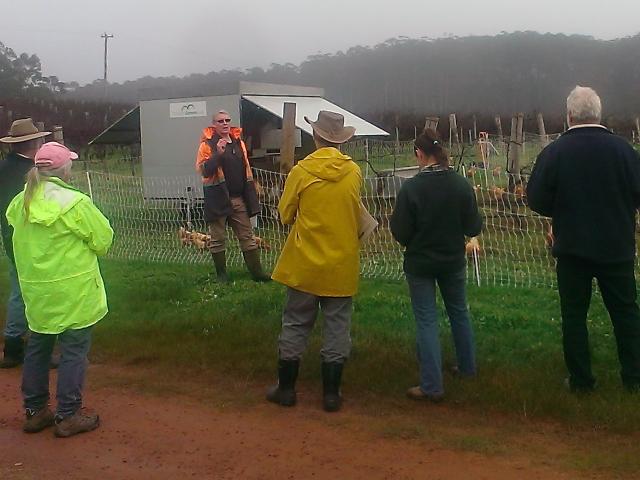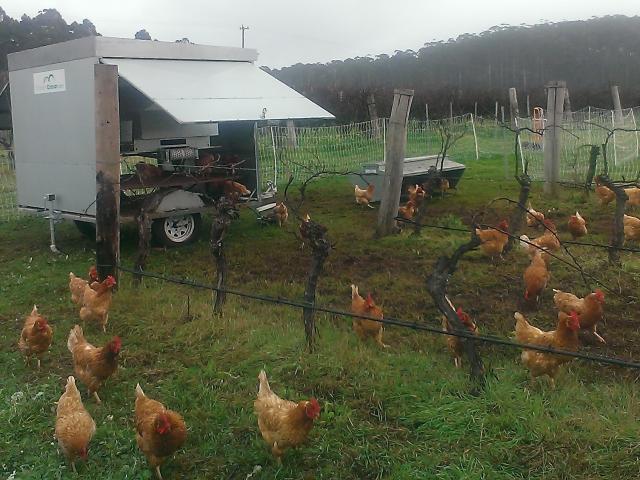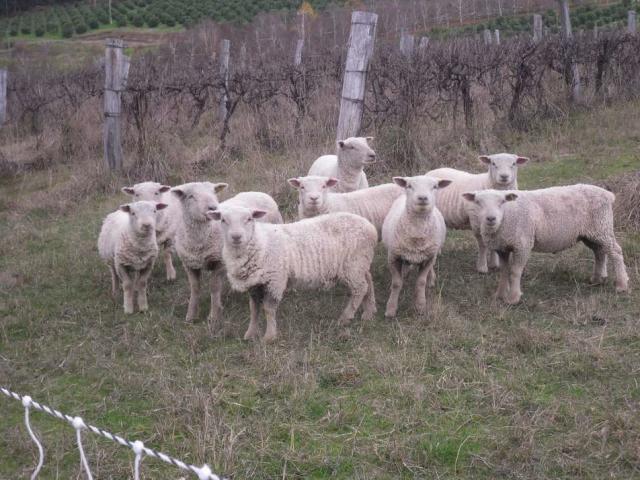Organic innovations demonstrated
Two of the biggest challenges facing organic grapegrowers are pest management and maintaining soil fertility. These issues call for innovative solutions, and that’s just what Pemberton grower Andrew Mountford of Mountford Wines is hatching, quite literally, with a combination of pastured chickens, baby-doll sheep and compost.
Mountford Wines is trialling these innovations on six hectares of organic vineyard and a one hectare organic orchard, in a project coordinated by Warren Catchments Council and supported by South West Catchments Council.
“The idea is to run the sheep in a couple of rows for two or more days depending on the time of year to get the weeds down. Then we move them onto the next set of rows and replace them with chickens to feed on the pests,” said Mr Mountford.
The practice is only possible with the ‘chicken caravan’, where the 85 chickens are locked up at night to roost.
“The people that supply the caravan also supply the fence, which is basically an electrified poultry net,” he added.
Mr Mountford said that the eight Southdown sheep on his property are very respectful of the net.
“The breed is called baby-doll because they are small but they’re ideal for us to run through the vines.”
There is nothing new about running sheep in a vineyard over winter, however Mr Mountford plans to run them all year.
“We’ll train the vines up to keep the fruit up high enough, so that the sheep eat the weeds and the water shoots which are a big problem for all vineyards, but especially for us because we are organic. The sheep will also trim the vines to promote air flow.”
So far the results are promising with a visual reduction in weeds between the vines. However the other challenge of soil fertility could be a bit trickier. To get a better understanding of soil health, Mr Mountford asked his friend and ex University of Western Australia soil technician, Gary Cass, for help. Mr Cass believes that to build soil biology, the first step is to identify your soil constraints.
“A lot of people looking to improve soil health just focus on the organic factors. We should be looking at the inorganic as well, including the sand, silt and clay content. Unless you get the inorganic factors correct with good porosity and infiltration, it’s sometimes hard to build up the organic level,” he said.
Mr Cass is a strong believer in getting your hands dirty, digging holes and conducting some simple tests.
“I like to look at the structure and how soil breaks apart. It’s a positive sign if you drop a chunk of soil and it breaks along natural fault-lines into numerous smaller aggregates. Plant roots grow down these fault-lines to access the water and nutrients held in these pores. If we drop the aggregate and it doesn’t break into smaller aggregates we might suspect compaction.”
Mr Cass also recommends buying a pH and salinity meter to get an idea of soil acidity and salt content, and to test other properties such as dispersion. Perhaps his favourite possession, however, is his microscope.
“Having a close look at your compost and soil and learning about the life in it is a great way to monitor the progress of the soil’s health which can then be associated that with any response in the vine and fruit.”
For more information on South West Catchments Council supported innovation trials, contact Sustainable Agriculture Project Manager, Peter Clifton, +61 (0)8 9724 2469.
This project is supported by South West catchments Council, through funding from the Australian Government’s National Landcare Programme.



